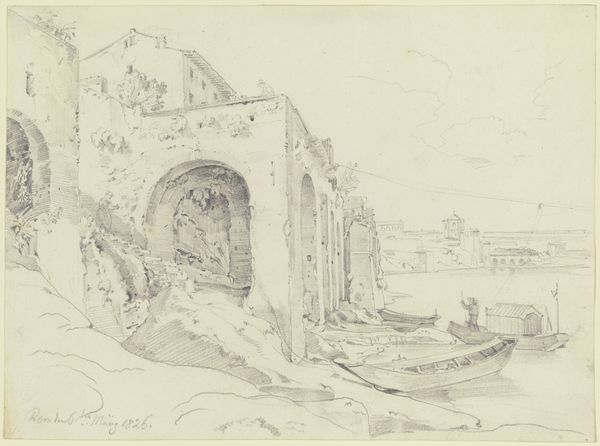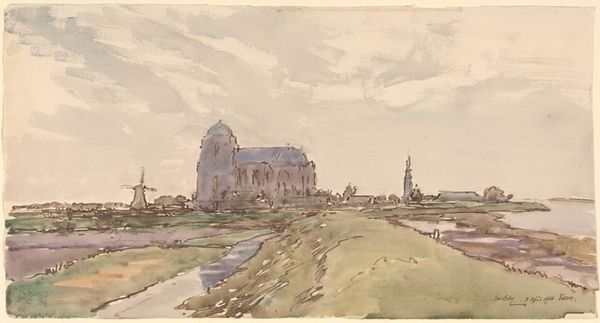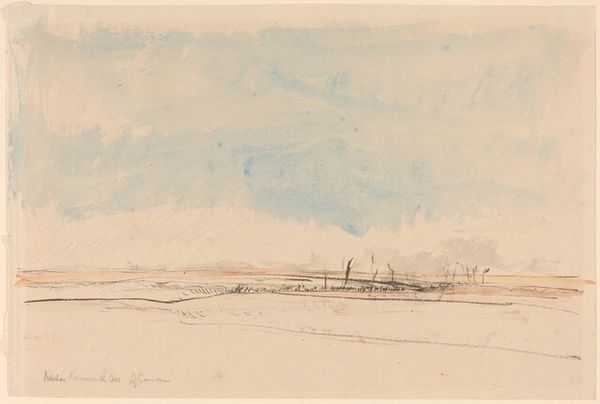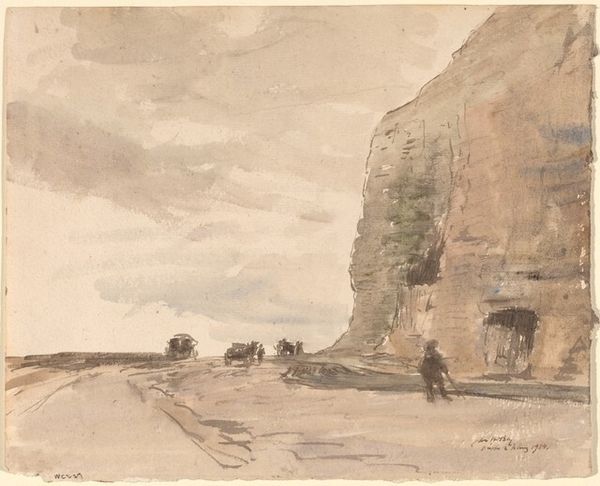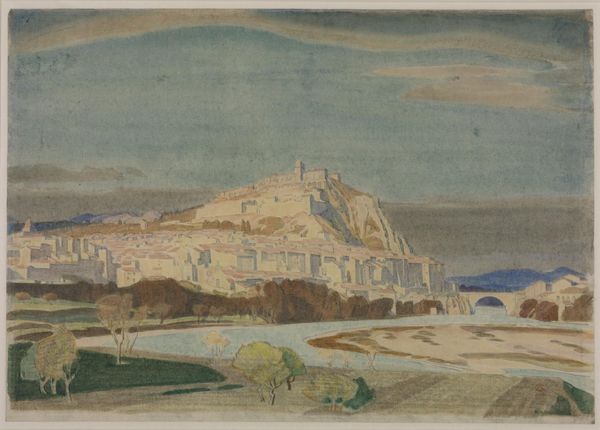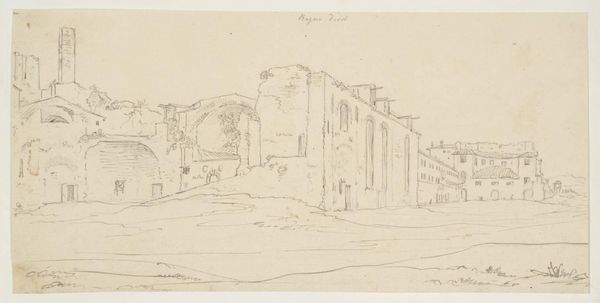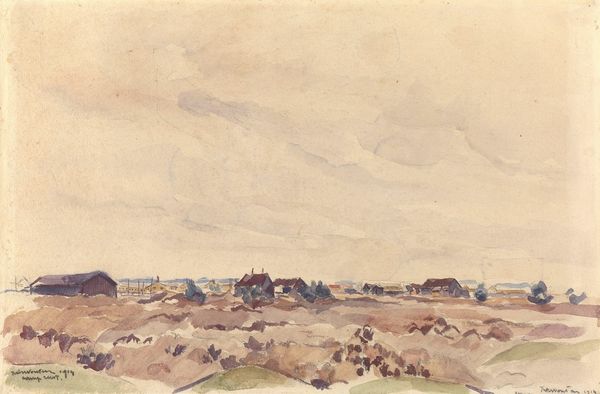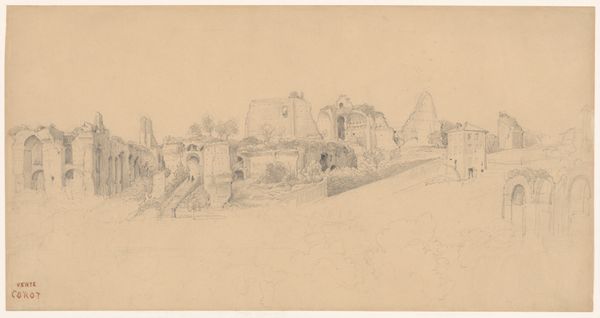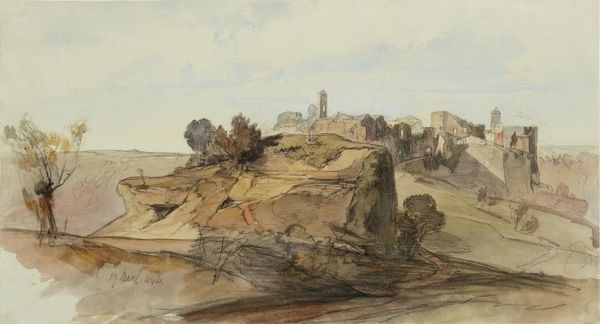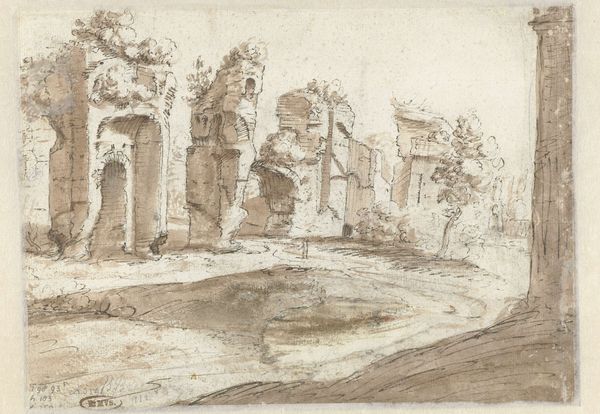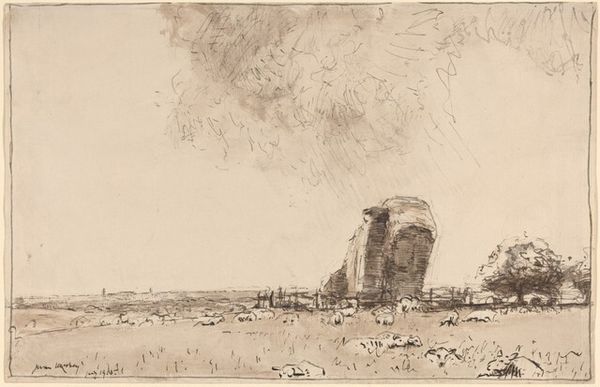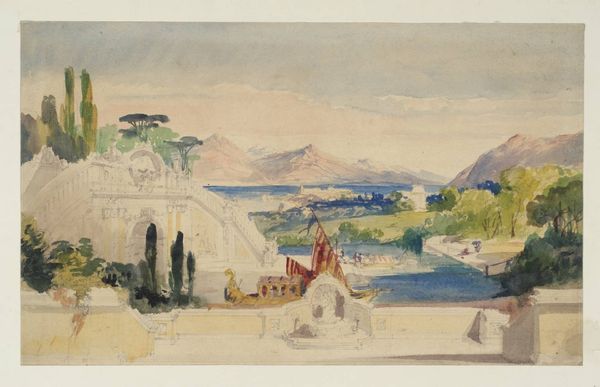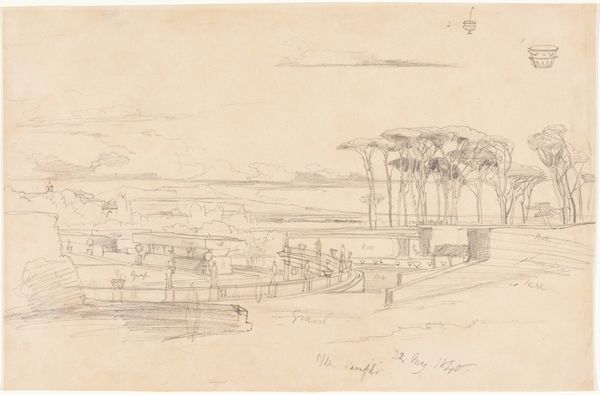
Dimensions: overall (approximate): 21.1 x 43.1 cm (8 5/16 x 16 15/16 in.)
Copyright: National Gallery of Art: CC0 1.0
Curator: James McBey's watercolor from 1927, titled "Bridge at Avignon," presents us with a lovely, sun-washed view of this iconic landmark. Editor: The first thing that strikes me is the lightness. It feels very open, airy... almost ethereal. Like a memory. The colors are subdued but the scene has such a powerful presence. Curator: That lightness is beautifully achieved through the watercolor technique. You can almost feel the sun on the stone and the gentle breeze. McBey was a master of suggesting detail, not explicitly defining it, which is so impressive here. This really shows off his plein-air method. Editor: Yes! There's a dreamlike quality to the architectural structure; a weightless defiance, considering the symbolic power that a bridge would come to represent through and between war torn landscapes, cultures and economies, at least, I associate it with a poignant optimism; a quiet assertion of connectivity even in divided times. Is that too much to read into it? Curator: Not at all. Consider how bridges throughout history, including Avignon, were crucial thoroughfares of trade, faith and people. Also think of how McBey rendered this familiar monument through impressionistic hazes. It reflects a kind of intimate seeing. The painting asks us: what do you see beyond the visible architecture and symbolic connectivity? What kind of memories do you ascribe to a cultural touchstone like Avignon? Editor: You're so right! The symbolism is so thick! Beyond a thoroughfare, though, and back to that lighter-than-air quality… It reminds me of a bridge to the afterlife or a portal. It makes me consider transitions and passage to someplace new. In that context it presents such a hope! Curator: Exactly! The painting acts almost like a mirror for personal reflection. It uses its gentle strokes of watercolor to suggest hope and memory. The Bridge becomes almost like a guide through time. Editor: I suppose that is why, though almost a century separates us from its creation, it has an undeniably contemporary allure. It still compels one toward quiet reflection on continuity. Curator: A lovely and compelling landmark and rendering, which now provides a quiet point of reflection on culture and connection.
Comments
No comments
Be the first to comment and join the conversation on the ultimate creative platform.
